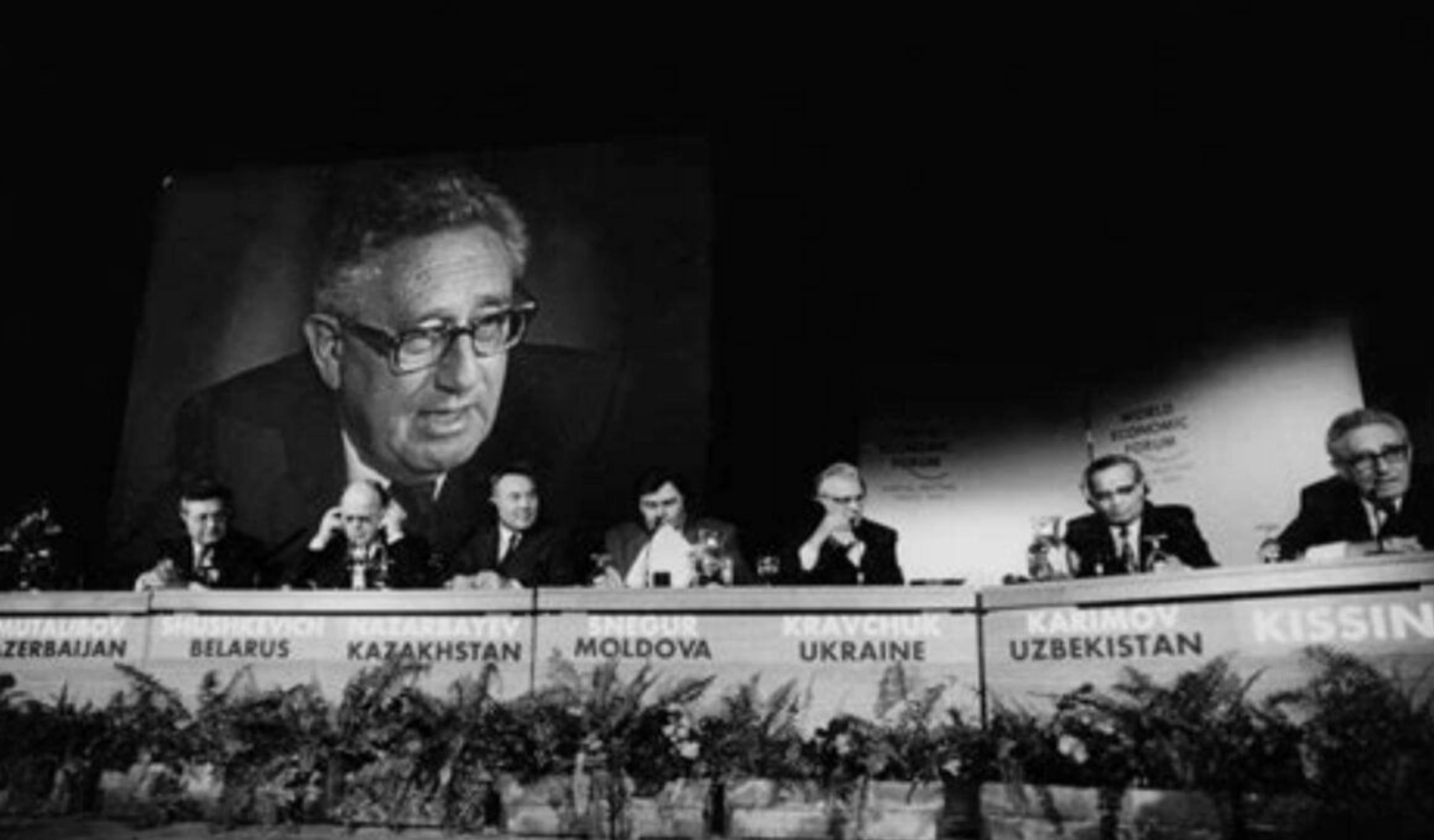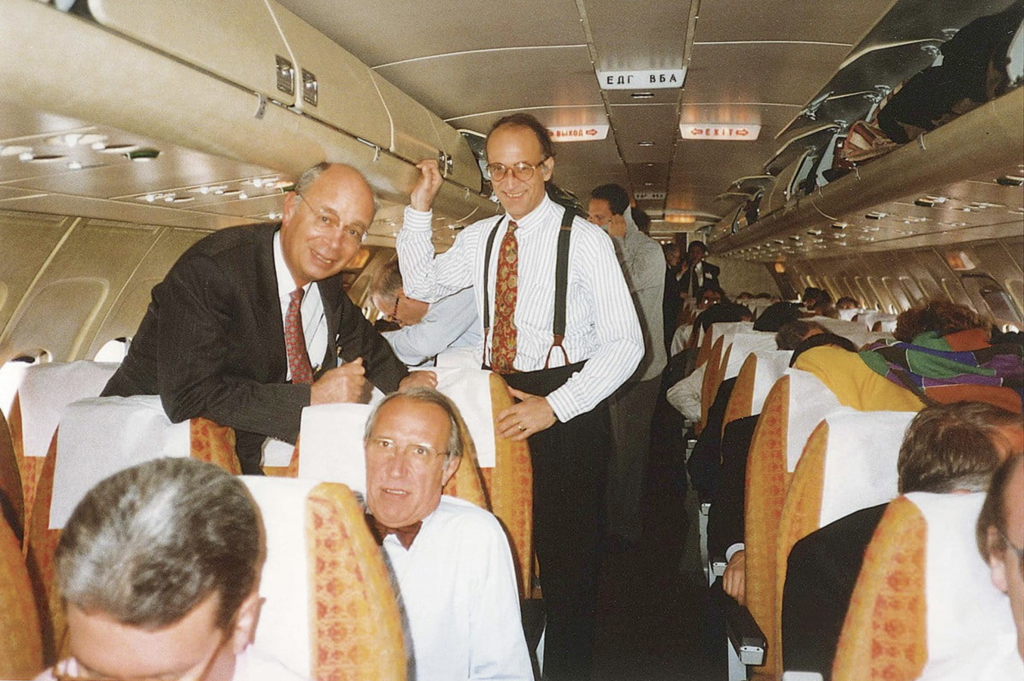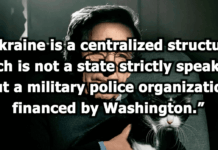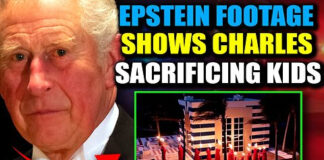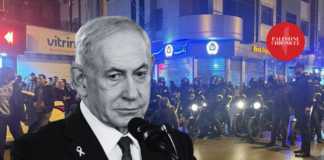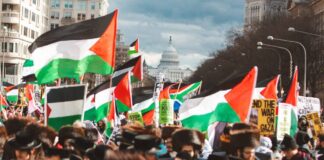The Kissinger Continuum
By Johnny Vedmore
UNLIMITED HANGOUT
The World Economic Forum’s Young Global Leaders program, Klaus Schwab’s supposed brainchild, is actually an almost exact replica of Henry Kissinger’s International Seminar that was originally run out of Harvard and was funded by the CIA. In this article, Johnny Vedmore investigates the people behind Kissinger’s International Seminar, the CIA conduits which funded the program, and Kissinger’s key role in the creation of the WEF’s Young Global Leaders program itself.
The World Economic Forum’s Young Global Leaders (YGL) initiative has been responsible for seeding many of the ruling elite into positions of power and influence within the worlds of business, civil society and, most importantly, politics. The fall of the Soviet Union soon became the apparent catalyst for the creation of the Global Leaders for Tomorrow program, which was the precursor to the Young Global Leaders initiative over a decade later.
However, the supposed mastermind of the project, the WEF’s lifetime leader Klaus Schwab, had himself already been helped into his own influential position by a very similar program run out of Harvard University that was heavily funded by the American Central Intelligence Agency (CIA). The Harvard initiative in question, often referred to as Henry Kissinger’s International Seminar, was one of several programs set up by senior members of organizations such as the Council on Foreign Relations and the newly created CIA. In fact, during the post-World War II era, the United States was proactively creating many such programs with the intention of grooming potential young foreign leaders and installing them into positions of power. The main motive behind the establishment of these programs was ostensibly to combat and prevent communist infiltration of foreign states while also assuring that future global leaders would be amenable to US interests.
Originally, the United States created these secretive youth organizations with the aim of targetting potential future European leadership candidates. Yet, soon, no country in the world would be safe from possible CIA-sponsored political infiltration. In this article, we will examine one of the front organizations which used vast amounts of CIA money to fund various Harvard projects including Kissinger’s International Seminar. We will learn who the people were who created these funding platforms, and we’ll also look at other such educational initiatives, some still in existence today, which have helped American intelligence infiltrate governments worldwide.
The American Friends of the Middle East
In 1967, it was Harvard’s own Humphrey Doermann who exposed that certain Harvard Summer School courses and initiatives were actually being funded via CIA conduits. Even though almost a decade of funding throughout the 1950s remained undeclared, it was revealed that, between 1960 and 1966, Kissinger’s International Seminar received funding from three CIA conduits: The Asian Foundation, The Farfield Foundation, and The American Friend’s of the Middle East, the latter being one of the more well-known, influential and successful CIA conduits of the era.
The CIA funded Harvard-based International Seminar, and the conduits which the Central Intelligence Agency used to supply the forum with the necessary funds to run the program, are of great historical significance.
The American Friends of the Middle East (AFME) was not just a simple front organization used to funnel secret CIA money into their various projects, in fact, there were some very big names attached to this prominent post-war organization. The AFME was considered to be an “international educational organization” and was formed the same year that Henry Kissinger launched the International Seminar at Harvard, in 1951. There were 27 men and women who made up the AFME, which was led by Kermit “Kim” Roosevelt, Jr., the grandson of former-American President Theodore Roosevelt. The CIA had been formed in 1947 from what was originally the Office of Strategic Services (OSS) and Kermit Roosevelt Jr. was extremely influential in the early years of both organizations.
Kermit Roosevelt had been recruited by the mastermind behind the OSS, General William Joseph “Wild Bill” Donovan, in 1941 and he was soon placed into the newly-created Office of the Co-ordinator of Information— the precursor to the OSS—as a special assistant to Dean Acheson. Working out of the State Department, Acheson, who was then Assistant Secretary of State, had been tasked during World War II with implementing President Franklin Roosevelt’s policy of undermining Axis powers while at the same time supplying economic aid to Great Britain. Kermit Roosevelt, who was distantly related to the president, had had an affinity with the Middle East from a very young age with the Daily Mail of Hagerstown in Maryland reporting in September 1948 that: “Mr. [Kermit] Roosevelt’s career as a writer began when he was a child with the composing of a prophetic poem, ‘The Lure of the East,’ for the ‘American Boy’ magazine. He was eleven at the time.” Kermit’s father, also named Kermit, had been in the “shipping business,” as mentioned in the latter article. This had meant that Kermit Jr. had travelled around the world at an early age.
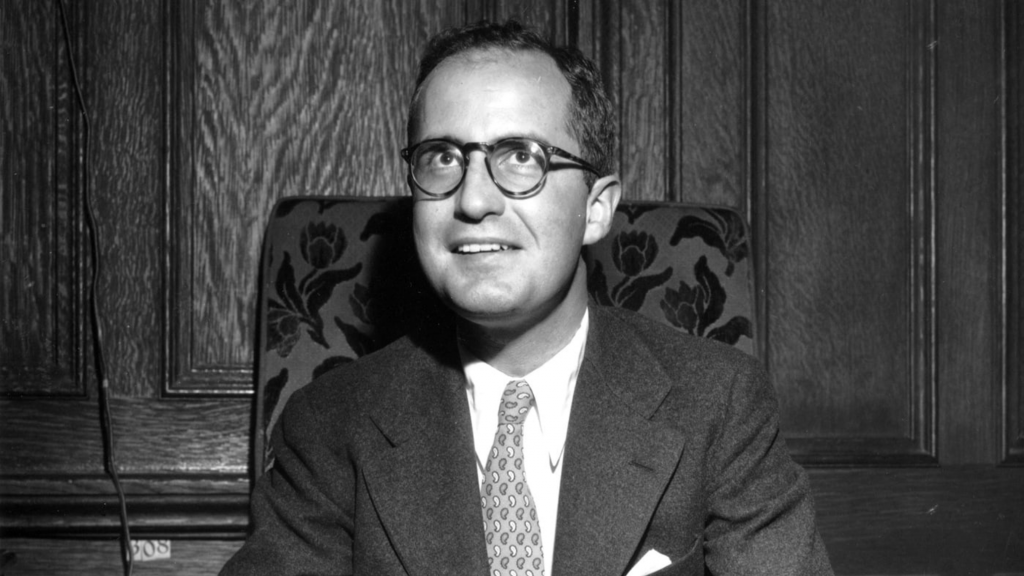
Kermit spent the war years serving in the Middle East and Italy, travelling extensively throughout the war and was reported to have toured Egypt, Saudi Arabia, Syria, Palestine, Iran and Ethiopia. His father, had spent the war fighting mainly in Norway and Finland, but also served briefly in Egypt, and died tragically in Alaska in 1943. The Abilene Reporter newspaper reported on Sunday 6 June 1943 that Kermit Sr. had passed away in Alaska the day before the article was published, with the paper noting: “Ordinarily, the phrase ‘killed in action’ is used to report a death in combat.” It was later confirmed that he had actually committed suicide. By this time, Kermit Jr. had already been recruited by the OSS. Kermit Jr. continued to work for the OSS as a Middle East expert once the war had ended and he also began writing and editing the history of the secretive organization. By 1947, the OSS had become the CIA and Kermit was on the forefront of designing projects and programs for the newly-founded intelligence agency. He also seemed genuinely concerned for the situation in the Middle East, and soon took part in a lecture tour. That tour, whether sponsored by the CIA or not, saw Kermit argue passionately on behalf of those who were suffering in Palestine.
In December 1947, Kermit began a lecture tour on a paper he had written concerning the Middle East, entitled, “The Arabs Live There Too,” which discussed the “Palestinian problem” and looked at the basic issues between the Arabs and Jews who inhabited the region. The report, which was published in the Evening Post, warned that the situation deserves “more than a cursory glance from Americans.” Kermit described Palestine as “the UN’s baby” and stated that America had taken over the job as “nurse and governess” of the region. The lecture tour was advertised in the Waukesha Daily Freeman on 22 December 1947, with Roosevelt stating within the articles: “Applying the principle of one of their proverbs, ‘My enemy’s enemy is my friend,’ the Arabs might move into closer alignment with the Soviet Union,” going on to warn that “Arabs will not blame Russia (who voted for partition in the UN) half as much as they will blame Britain and the United States.” Kermit Roosevelt believed that the Arab league would stop short of all out war, describing an official declaration of war by any of the seven Arab nations as being “extremely unlikely.”
Roosevelt was eventually proved correct about the Arab nations not declaring war immediately and predicted instead that: “Any time the Arabs felt themselves strong enough, they would surely try to recover Palestine.” Before Kermit began his first covert operation in an Arabic country, he had been initially sent to Tibet by then-President Harry Truman to help ward off communist influence. The Delta Democrat Times of Mississippi reported on 9 April 1950 that: “Kermit Roosevelt, son of a G.O.P. President, is also being used on a confidential mission to block Communism in Tibet.”
Kermit Roosevelt believed that forming alliances with Arab countries as they emerged from British and French rule would pay dividends for America while also preventing Soviet infiltration of Arabic nations. However, that strategy would rely on the Western powers’ ability to keep Arab nationalism at bay, whether by diplomacy or subterfuge.
During 1943, Kermit worked for the State Department in Cairo and this was one of the first Middle East countries in the post-war years to experience a CIA-backed coup d’etat. At the same time as Kissinger was commencing the pilot of the Harvard International Seminar in the early 1950s, Kermit Roosevelt was deeply involved in overthrowing the ruling Egyptian regime, running a special covert operation which was gingerly named “Operation Fat Fucker”, normally referred to as simply “Operation FF.”
Egypt, at the turn of the 50s, was ruled by King Farouk, a notorious ruler who was already seen as corrupt in the eyes of most Egyptians. The project to depose him was led by the CIA’s then-director Allen Dulles, alongside CIA Station Chief in Cairo, Miles Copeland, Jr.; Secretary of State, Dean Acheson; and Kermit Roosevelt, Jr.—who was officially a CIA Operative at that time—with the original aim of applying pressure on Farouk to enact certain political reforms within his country. When the initial “pressure” phase had failed, resulting in Farouk rejecting the American proposals, Kermit Roosevelt came up with an idea of how to orchestrate a peaceful revolution which would see both the required reforms enacted and the country more open to “American control,” as historian Matthew F. Holland puts it.
Roosevelt met in secret with the Free Officers Movement, a nationalist revolutionary group, which was led by Gamal Abdel Nasser and Mohamed Naguib, and which was already planning to overthrow the government. On 23 July 1952, the coup d’etat, which had been the brainchild of Roosevelt, saw Farouk forced into abdicating power and he was sent into exile in Italy. The CIA-led coup had successfully installed a new government, which they believed would be more amenable to further American infiltration. The CIA would then help the newly installed Egyptian government to establish the General Intelligence Agency, Egypt’s own CIA clone organization.
The following year, in March 1953, the then Secretary of State, John Foster Dulles, directed the CIA, which was still headed by his brother, Allen Dulles, to begin preparing a similar coup in Iran. The same people who had successfully installed Nasser in Egypt were given $1 million in funds—equivalent to $12,128,464.73 in 2022—which were to be used to bring about the fall of the Iranian leader Mohammed Mosaddegh. Mosaddegh was successfully deposed on 19 August 1953 in a coup orchestrated by both the CIA and MI6, again led by AFME’s Kermit Roosevelt Jr., in a project entitled “Operation Ajax.” The successful coups in Egypt and Iran were not spontaneous events but were instead well executed and intricately planned operations. However, the Americans were soon to learn that, if they were to continue to overthrow governments, they would first need to have effective American-aligned leaders already trained-up and ready to install into their target countries.
Before the newly-created CIA had begun to enact the aforementioned coups in Egypt and Iran, Roosevelt had founded the Committee for Justice and Peace in the Holy Land with many of the same people who would later make up the American Friends of the Middle East. The Committee for Justice and Peace in the Holy Land was formed in February 1948 by Roosevelt and a woman named Virginia Gildersleeve whose sympathies, according to historian Robert Moats Miller, “were indeed overwhelmingly with the Arabs,” and was a leading figure in the Christian opposition to the creation of the Israeli state.
Gildersleeve had been the long-term dean of Barnard College, but—in 1947—she had stepped down from her position to concentrate on other activities. In February 1948, the New York Times reported that she led a group opposed to the creation of a UN police force in Palestine. The article, entitled 7 Leaders Propose Truce in Palestine, also stated that the group’s members were: “Terming the present conflict in Palestine far more dangerous to world peace than most Americans realize,” with the group stating: “We feel a moral and civic obligation to urge that the most serious attention be given to our national policy with respect to Palestine,” with that statement also being cosigned by Kermit Roosevelt. Also prominent alongside Gildersleeve and Roosevelt in the creation of the AFME was Harry Emerson Fosdick, an American pastor described as an “active anti-Zionist” and who later became a major influence to Martin Luther King Jr.
Another notable member of the AFME was the controversial Dorothy Thompson. Thompson was an American journalist and radio broadcaster who had the honour of being the first American journalist to be expelled from Nazi Germany in 1934. Thompson was described in a 1939 Time magazine piece as being equal in influence to Eleanor Roosevelt and was often referred to as the “First Lady of American Journalism.” However, Thompson also held extreme views concerning America’s black voting population, describing them as: “Notoriously venal. Ignorant and illiterate, the vast mass of Negroes are like the lower strata of the early industrial immigrants, and like them are ‘bossed’ and ‘delivered’ in blocs by venal leaders, white and black.”
Thompson was a vocal anti-Zionist, coming to the conclusion that Zionism was a recipe for perpetual war. But, even though Roosevelt, Gildersleeve and Thompson all publicly opposed Zionism, the CIA in general would reap many benefits by creating a world which, if not in a state of perpetual war, was nearly always on the brink of perpetual war. The AFME included some of the key people who were moulding and influencing the post-war intelligence push. Even though we could find many interesting facts in studying all 27 members of the AFME, we now know that their interests focused on education and eventually resulted in the funding of a specific Harvard project that would create cadres of future international leaders who were amenable to America’s political interests and desires, including Klaus Schwab.
Just after World War II, there were many differing opinions within the American political establishment concerning what should be done about the “Palestinian problem.” Although many of the members of the AFME may have been publicly anti-Zionist, an upsurge in Arab nationalism had been triggered by the Nakba, the ethnic cleansing of Palestinians following the creation of Israel in 1948. This initially resulted in a divide in public opinion, with many Americans eventually siding with the newly founded Israeli state and their occupying force.
Popular opinion among the Arabic countries was much less divided. The Arab League closed their offices in Washington DC—referred to as the Arab Office—in 1947, stating publicly that the United States had shown a “complete and arrogant disregard for Arab rights, Arab interests, and Arab feelings.” At this time, the United States were still heavily dependant on Arab oil and the supply of this oil also relied on America having good relations with the Arabic world. The US oil consortium ARAMCO could only continue benefiting from Arab petroleum if the US stayed on good terms with the Saudi king, Ibn Saud, who was an extreme anti-Zionist. ARAMCO soon setup an office in Washington so as to lobby government on behalf of the Arabs while also putting funds into educational institutions such as the Middle East Institute. Yet, it wasn’t only the Arab contingent of the American population who were concerned about the rise of Zionism, with the American Council for Judaism (ACJ) objecting to Zionism because they believed that it conflated religion and nationality. Rabbi Elmer Berger of Michigan, who was an ACJ leader at the time, campaigned for American Jews to stop supporting the creation of the state of Israel. At the time, the State Department had also been worried about throwing their lot in with the Zionists. They were mainly concerned with the potential for the growth of communist influence in Arab countries if the US showed too much support for the newly created state of Israel.
According to historian Hugh Wilford, it was to be the Cairo-based former-OSS members who acted as “the nexus of the network that would become the American Friends of the Middle East” as he makes note of in his paper entitled, American Friends of the Middle East: The CIA, US Citizens, and the Secret Battle for Public Opinion in the Arab-Israeli Conflict, 1947-1967. Wilford also points out that Kermit Roosevelt associated with many anti-Zionists of the period. For example, he was actually under the command of an anti-Zionist descendent of missionaries named Stephen B. L. Penrose Jr. Roosevelt had also shared a room with George L. Levison, a State Department officer of Jewish descent who later introduced Roosevelt to such leaders as the aforementioned Elmer Berger. Roosevelt, Levison and Berger all became close friends, with Levison eventually being godparent to one of Roosevelt’s children.
Roosevelt was not only vital in setting up the original iteration of the AFME, the Committee for Justice and Peace in the Holy Land, he also ran the organization out of his Washington home alongside the organization’s secretary, Garland Evans Hopkins. Eventually the anti-Zionist activists within the government failed in their efforts to prevent the creation of the state of Israel when President Harry Truman officially recognized Israel’s sovereignty. Roosevelt continued to undermine future support for Israel and, a year after Truman’s recognition of the country, Roosevelt and others formed the Holy Land Emergency Liaison Program (HELP), which was to coordinate aid for displaced Arabs in the region while also working to, as Hugh Wilford puts it: “Reduce US support for Israel.” It is also around this time where Dorothy Thompson and others began to raise the profile of Roosevelt’s organization.
The Battle for the Hearts, Minds and Souls of the Future Global Leaders
The Harvard Summer School had been running for over 75 years by the time Henry Kissinger was finishing his studies at the university. In 1950, Kissinger achieved his Bachelor of Arts degree in political science and, during his studies, he received much attention from some very powerful Harvard grandees. In 1951, Kissinger launched the Harvard magazine entitled “Confluence,” which was to run alongside the International Seminar, and became the publication’s editor. This quarterly magazine was funded by the Rockefeller Foundation and received contributions from others who were described as “various luminaries who had previously been lecturers or students at the Summer School.”
The International Seminar was later boosted by extra funding totalling at least $135,000—$1,637,342.74 in 2022—by the Central Intelligence Agency between 1960 and 1966 alone, with any previous CIA funding since the seminar’s creation in 1950 being left undeclared. Harvard Summer School’s International Seminar Forum had originally been the brainchild of William Yandell Elliott, an important mentor of Kissinger who took a back seat and remained out of the public eye. After the pilot event for the International Seminar Forum in 1951, the young Kissinger wrote to William Yandell Elliott, saying: “I was very much embarrassed to hear myself described as the guiding genius of the Seminar,” going on to say: “I, for one, have no illusions on this score.” Subsequently, the majority of participants would recall the influence of Kissinger rather than Elliott, with the forum eventually being commonly referred to as “Kissinger’s International Seminar.”
The CIA money for what was described as the “foreign seminar” came via a known CIA conduit, the aforementioned Kermit Roosevelt’s American Friends of the Middle East. Kissinger and his biographers would claim that he was unaware of the organization’s intelligence ties, describing Kissinger as “flying into a rage” upon learning that the AFME was actually a front for the CIA. However, Kissinger’s letters to H. Gates Lloyd during this period told a different story. They show that Kissinger had carefully itemized the expenses of the Summer School. Other documents within William Yandell Elliott’s papers also revealed that Kissinger may have even acted as a contract consultant for the Office for Policy Coordination (OPC) which was the covert operation wing of the Central Intelligence Agency. In fact, Elliott had written a letter to Lloyd on 15 November 1950, which urged progress with the Summer School proposal and the creation of Kissinger’s International Seminar. With that letter came certain papers directed to Kissinger himself which showed he had discussed the proposals with Cleveland Cram, an infamous and powerful early member of the Central Intelligence Agency. Cram had originally sought a career in academia but was recruited by the CIA in 1949. He was soon liaising with Yandell Elliott and Kissinger concerning the Harvard Summer School project and, after it was up-and-running, Cram was sent to London to become the Deputy Station Chief and the official liaison between the CIA, MI5 and MI6. In this CIA/Harvard nexus of the late 1940s and early 1950s, came the formation of what would, a generation later, evolve into the World Economic Forum’s Young Global Leader initiative.
One of the original reasons for the creation of the CIA had been to counter Soviet influence in foreign countries and they used multi-pronged attack strategies to achieve their aims. While Allen Dulles, Kermit Roosevelt Jr., and their secret army, were organizing and enacting coup d’etats in country after country, other CIA-linked organizers and contributors were beginning to create the infrastructure that would allow them to recruit, train and install young European leaders into positions of power, leaders who they believed were unlikely to be susceptible to potential Soviet influence. Harvard was not alone in its funding of such projects. In fact, as Hugh Wilford noted in his fascinating and informative book The Mighty Wurlitzer, Yale was: “The single most fertile recruiting ground for the Agency in its first years, yielding among others Cord Meyer and two of the brightest stars of the ‘Golden Age’ of covert operations, Richard Bissell and Tracy Barnes.” Also noted by Wilford are Yale’s James J. Angleton and Norman Holmes Pearson. The latter, Wilford notes, had graduated from Yale before serving in the OSS and returned to the university after the war in order to set up his “American Studies” program. The CIA were essentially trying to win the hearts and minds of young foreigners in direct competition with the Soviet Union.
The communists had already been busy targetting the impressionable youth for over 25 years before the end of WWII with Wilhelm “Willi” Münzenberg, a German-born communist activist, being the first leader of the Young Communist International (Comintern) as early as 1919. In 1945, a conference took place in London which saw the launch of the anti-imperialist World Federation of Democratic Youth (WFDY). The following year saw the founding of other groups with…
Continue reading article at:
Disclaimer: We at Prepare for Change (PFC) bring you information that is not offered by the mainstream news, and therefore may seem controversial. The opinions, views, statements, and/or information we present are not necessarily promoted, endorsed, espoused, or agreed to by Prepare for Change, its leadership Council, members, those who work with PFC, or those who read its content. However, they are hopefully provocative. Please use discernment! Use logical thinking, your own intuition and your own connection with Source, Spirit and Natural Laws to help you determine what is true and what is not. By sharing information and seeding dialogue, it is our goal to raise consciousness and awareness of higher truths to free us from enslavement of the matrix in this material realm.
 EN
EN FR
FR

